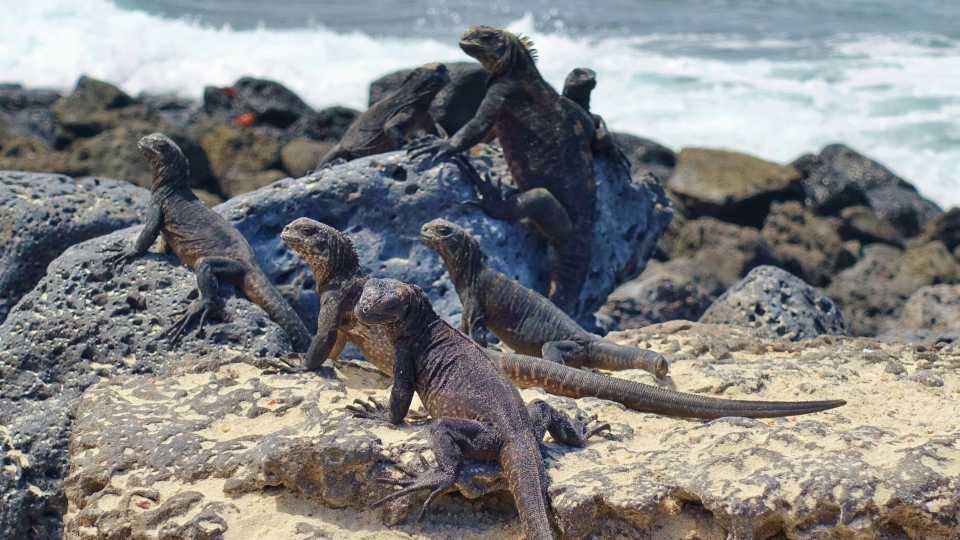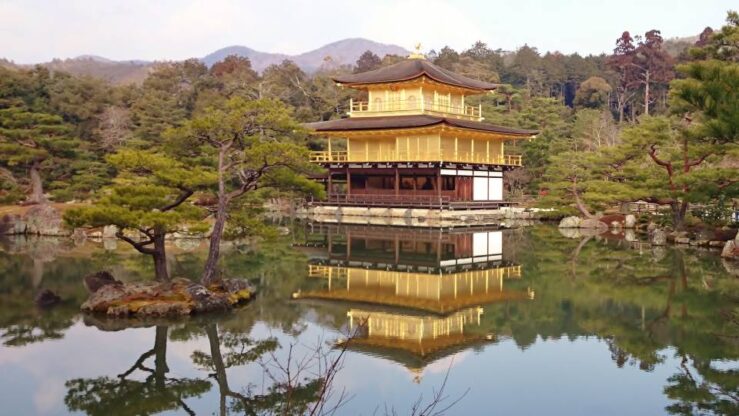Galapagos Animals and Darwin’s Birds Hang Out at Tortuga Bay
We are now in the midst of exceptional cactus vegetation with hundred-year-old cacti turned into tremendous trees with massive, brown trunks. Apparently, the vegetation is popular among finches (Darwin’s birds!) and other bird species. Now and then, we catch a glimpse of the adorable little birds that belong to the forest. The cactus trees grow between rough lava stones in the impassable terrain.
The trail is a straight stone path which, in approximately 45 minutes, leads to the impressive beach. We have high expectations since we have read that the beach at Tortuga Bay, Galapagos, features handsome marine iguanas, white tip reef sharks and other fascinating animals – besides a seascape of outstanding natural beauty.
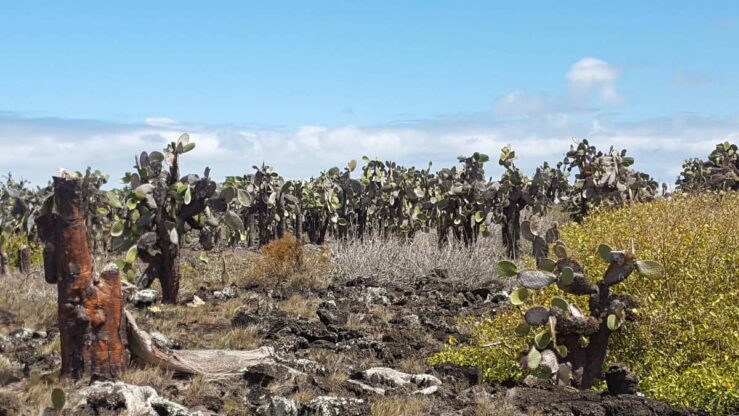
The cactus trees on the way to Tortuga Bay | Photo: Travel In Culture
Suddenly and completely unexpectedly, we spot an awe-inspiring tortoise behind a tree. That is the first tortoise we have encountered at close range in the Galapagos Islands, and we had actually been convinced that it would be necessary to go to the highlands of Santa Cruz to see these large animals at this time of the year, a tour which we have planned for tomorrow. The tortoises move up and down the island throughout the year, from the lower parts to the very highlands, depending on the season and the food resources available.
We must watch out for the fast lava lizards, constantly adapting in colour to their surroundings and, therefore, often not easy to see. We are all the time alert not to step on any of those.
The walkway leads directly to the gorgeous Tortuga Bay beach (Ecuador). Some people consider this beach among the most sublime and spectacular beaches on Earth! Now, seeing it for ourselves, we must agree that the scenery is absolutely magnificent!
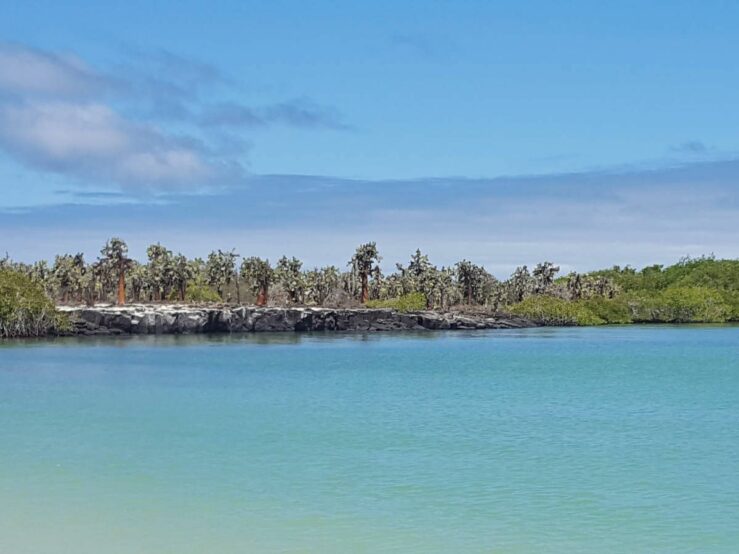
The lagoon at Playa Mansa, Tortuga Bay | Photo: Travel In Culture
When leaving the last part of the trail, a mangrove area, the first beach we arrive at is the main beach, Playa Brava. It is maybe a kilometre long and has the finest, powdery sand. The view is gorgeous, with striking contrasts between the pristine white sand and the crystalline, turquoise sea. However, the waves are high, and the currents are said to be strong here, so the place is not apt for swimming.
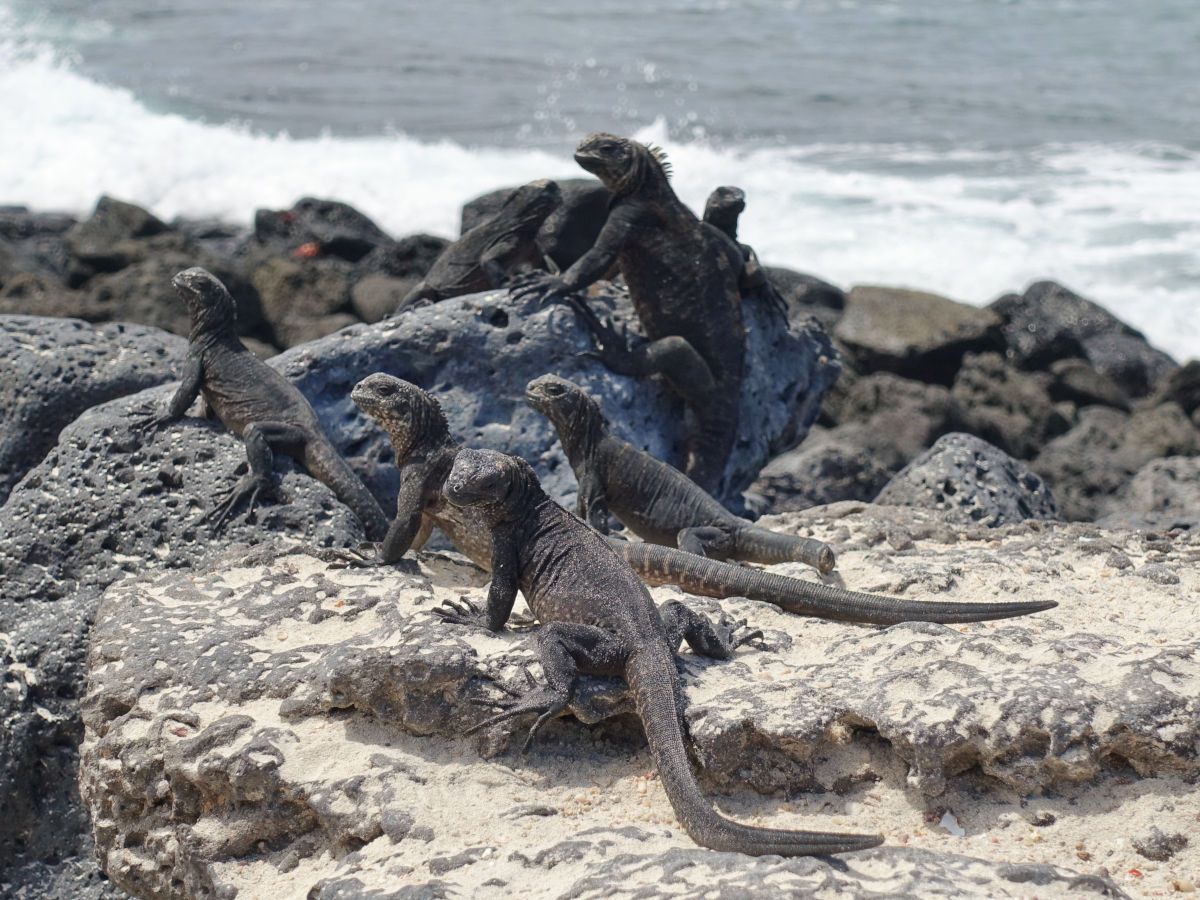
Photo: Travel In Culture
We continue walking along the rocky coastline of Tortuga Bay to arrive at Playa Mansa, a lagoon with calm turquoise-blue waters. Just before reaching it, we suddenly find ourselves face to face with dozens of spectacular marine iguanas – the most awesome Galapagos animals! They are sunbathing lazily without taking too much notice of people passing or shooting beautiful photos of them. We find the reptiles cool and fascinating and stay for a while observing them. A little bit further ahead, we find a group of baby marine iguanas on the black lava rocks, which are completely spellbinding to us with their cuteness.
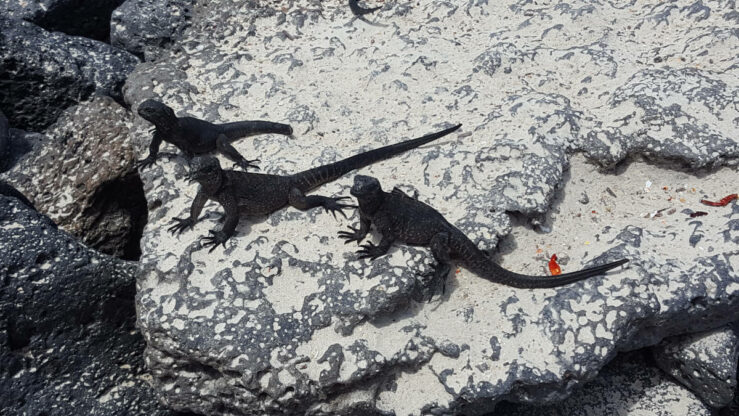
Baby marine iguanas at Tortuga Bay ´Photo: Travel In Culture
Road safety Ecuador/your country
McMeal price Ecuador/your country
Crime rate Ecuador/your country
Playa Mansa is breathtaking, with a cactus forest on one side of the lagoon and stunning mangroves on the other. We curiously take a stroll along the vegetation.
Unexpectedly, we come across a burrow in the sand, dug by a ghost crab, which apparently is still inside it since the sand around it is moving. It attracts our attention since it is surrounded by small sand balls and scratch marks in all directions. The ghost crabs hide in their burrows during high tide and do not emerge until the tide goes down. They scoop up and filter the surface layer of sand, take out and ingest small organisms, leaving tiny balls of clean sand behind.
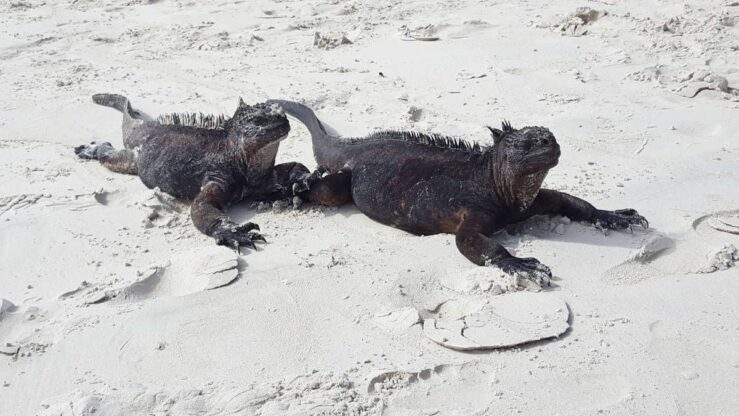
Marine iguana couple | Photo: Travel In Culture
The fierce-looking marine iguanas impress us. The biggest ones are considerable in size. Most of them remain quite immobile when we pass, and the few that do move do it at a slow pace. Only when we later see one of them swimming in the sea by the mangroves do we see some actual movement!
We know there is a likelihood of spotting white tip reef sharks in the water near the mangroves – so we decide to give it a whirl and head towards the far end mangroves to explore the water there.
‘Darwin’s Birds’
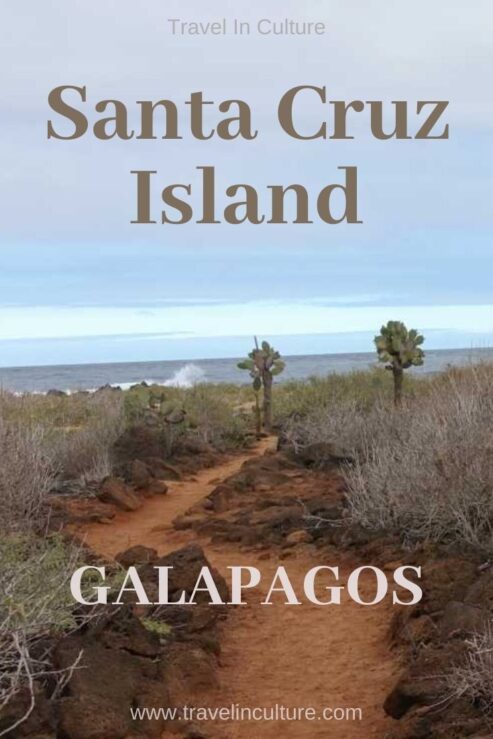
Without too high expectations, we step out in the water and climb over a few slippery rocks to get to the proper depth. A local group of people draw our attention to some shadows a bit to the side. They are eager to report what they spotted just a moment ago. Very soon after, we marvel at what we see. A woman explains to us that the sharks come in at high tide. They swim in and out, so we will most likely get several opportunities to observe them.
The wait is not long. Three dark sharks come in and appear in shallow water beside us. We follow their course despite the unclear, sand-muddy water around the mangroves.
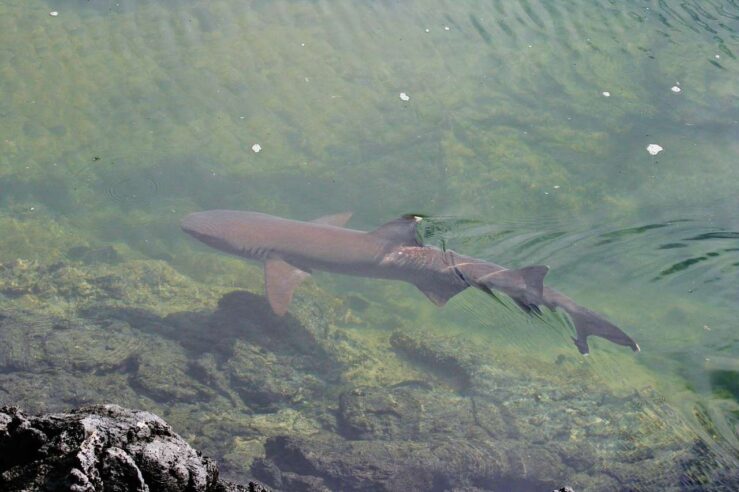
White tip reef sharks swim in Tortuga Bay | Photo: 5547001 / Pixabay
Now and then, their top fins emerge from the water, and we see that the tip above the water is snow-white, justifying the name of the species.
- Scalloped hammerheads
- Whale sharks
- Galapagos sharks
- White tip reef sharks
- Black tip reef sharks
Even if knowing that they do not pose any threat or danger to humans, we do not quite know how to react when one of the sharks, a gorgeous 2-metre (6-feet) long shark, all of a sudden swims around the two of us, really up-close.
The sharks stay for an hour or two among striped reef fish, and we come and go to observe them and look out for other fishes. Our Ecuadorian company on the beach are keen on guiding me to spot the remarkable animals when they appear to be around.
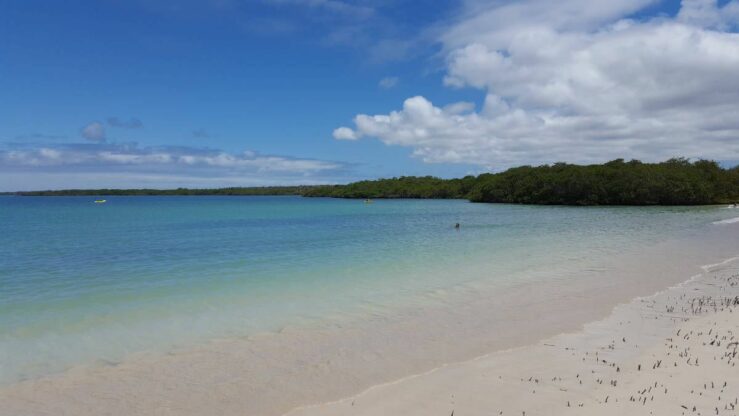
Galapagos Animals and Darwin’s Birds at Tortuga Bay | Photo: Travel In Culture
Spotted eagle rays are suddenly located in the water near us. One swims back and forth along the beach, drawing people’s attention. A group of children follow it with exaltation. It is the perfect location to snorkel or explore one of the richest marine ecosystems in the world – maybe from a rental kayak!
Tortuga Bay has already, by far, exceeded our expectations – although already pretty high before coming!
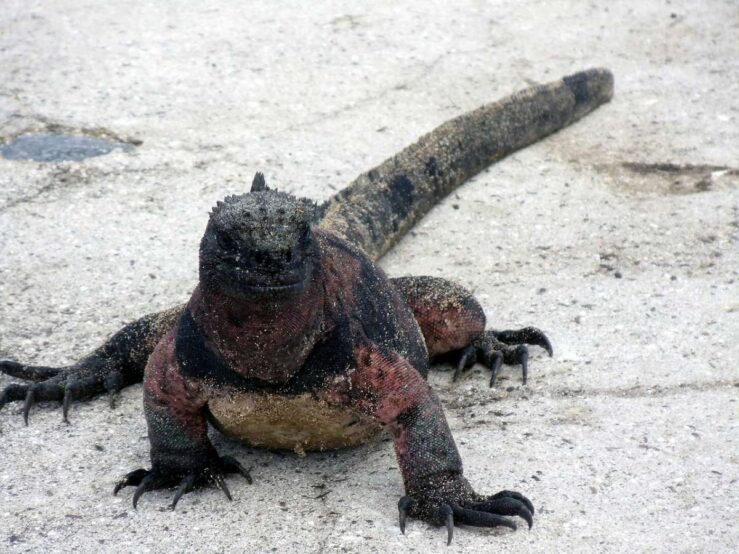
Photo: PublicDomainPictures / Pixabay
We have brought a picnic from Puerto Ayora to Tortuga Bay since there is no possibility of buying anything on the Galapagos beach, not even water. What we were not aware of is that at the very moment we open our bags and take out the bread, dozens of birds gather around us.
Most of them are cactus finches – Darwin’s birds! Also, other species appear, including a persevering mockingbird. They are not the least shy and persist in fighting for bread crumbs, being indiscreet to the point that we start feeling a bit annoyed. Nevertheless, at the same time, we find it interesting to observe the finches since these species are the birds that played such a crucial part in Darwin’s research!

Birds on the beach – ‘Darwin’s finches’ | Photo: Travel In Culture
We try to judge whether their beaks are thin or thick, short or long, pointed or rounded. It was the variations in finch beak form that so inspired Darwin in his work and constituted essential elements of and contributions to his later theory of evolution. The beaks adapted to the surroundings based on the available food resources, i.e. whether these were insects, iguana blood, nectar from cactus flowers or seeds. The adaptive development has resulted in finches, still today, being different in the various Galapagos islands, depending on the food resources present.
Indeed, there is a varied bird life on the beach. Before long, greyish lava gulls are soaring into view, approaching us. Also, majestically appearing pelicans elegantly sweep along the coastline, just above the water surface.
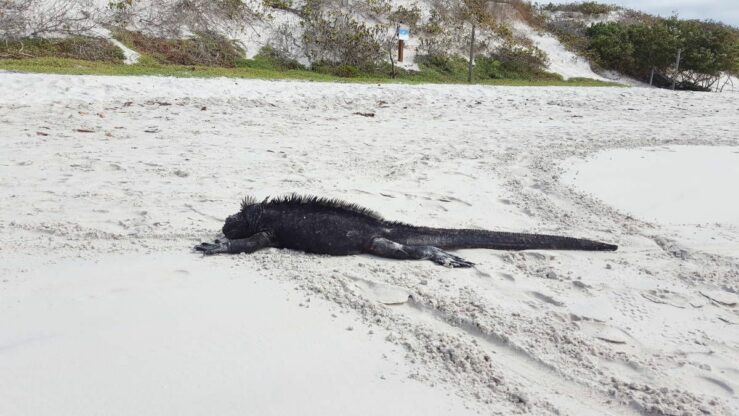
Photo: Travel In Culture
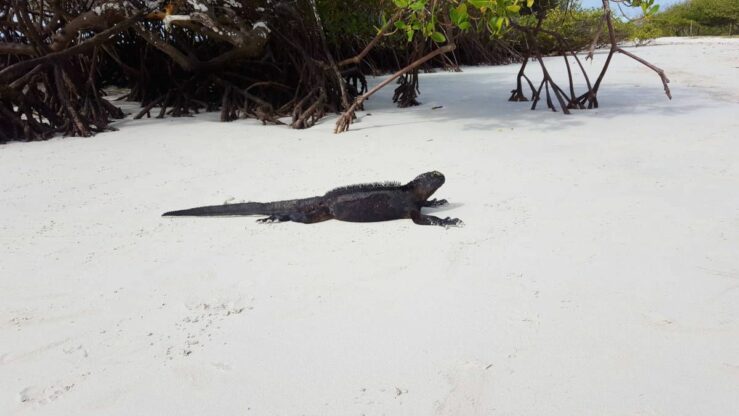
Tortuga Bay has the most pristine sand | Photo: Travel In Culture
The naturalist and geologist Charles Darwin did significant research on the variations in life in the Galapagos Islands. He arrived on the HMS Beagle’s second journey along the South American coast in 1835, nearly four years after setting off from England. During one month in the Galapagos Islands, he collected fossils, plants and animals as evidence for his theories.
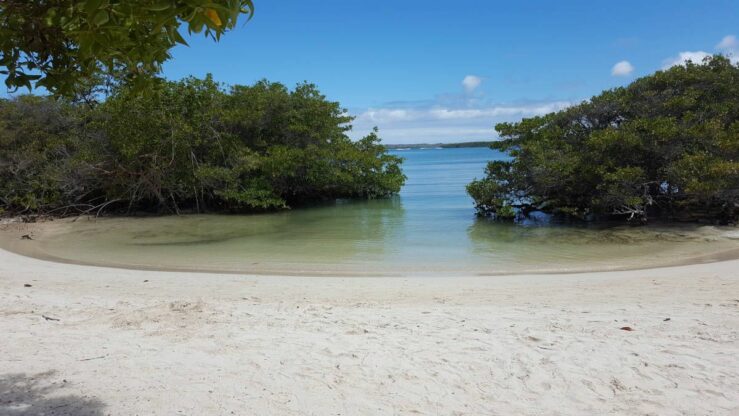
Photo: Travel In Culture
Darwin drew the conclusion that the species on each island possessed tiny differences due to adapting to the specific conditions in each of their biomes. The Galapagos Islands were perfect as a research field because of their isolated location. Consequently, life on the distinct islands had no interaction with the outside world or the other islands. Therefore, variations in biodiversity necessarily would have to be explained by evolutionary adaption.
Darwin developed his ideas about survival of the fittest and his theories of evolution or natural selection based on his research, among other places in the Galapagos Islands: San Cristóbal, Floreana, Santiago and Isabella.
Read next: Galapagos Sharks, Brujo Fish & Harbour Life and Unique Stay in Hanga Roa, Easter Island
Find useful travel gear: Travel Essentials
‘Galapagos Animals and Darwin Finches Hang Out at Tortuga Bay’
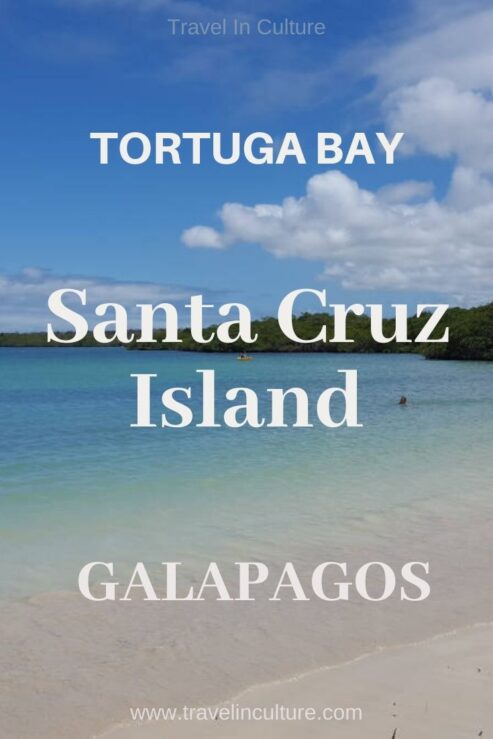
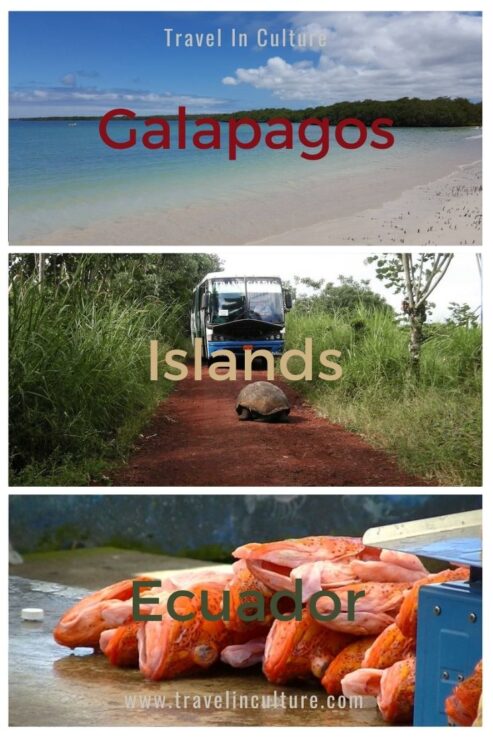
Featured image of
Galapagos Animals and Darwin’s Birds – Tortuga Bay:
Travel In Culture


